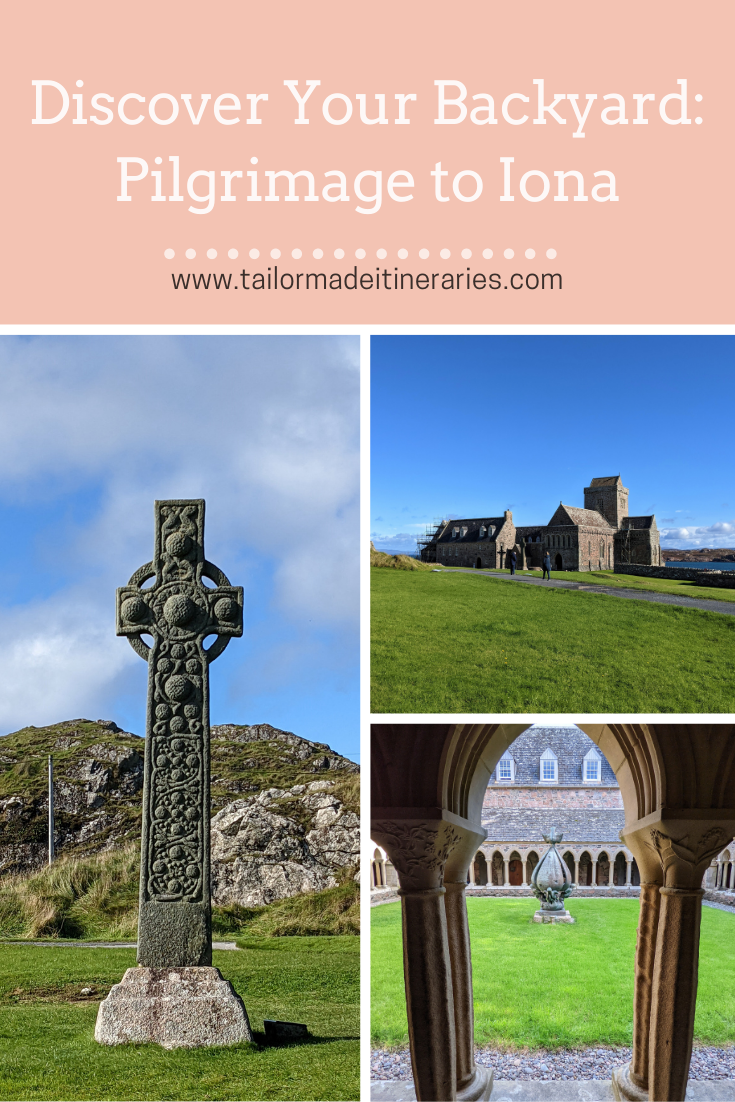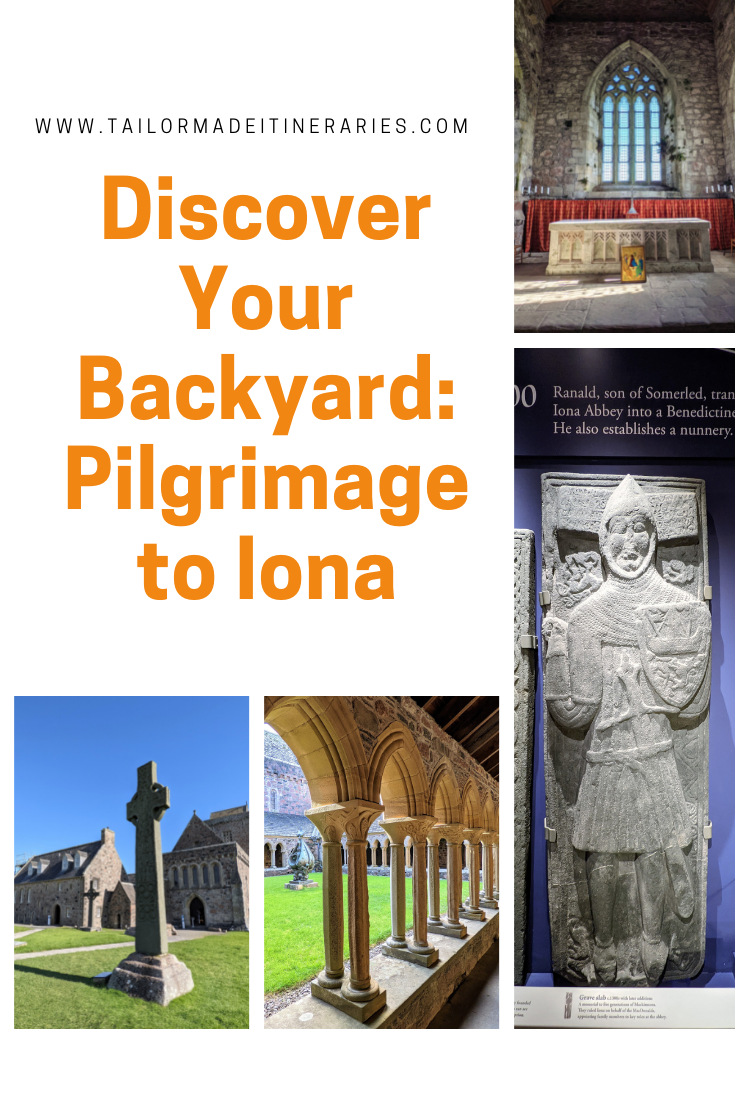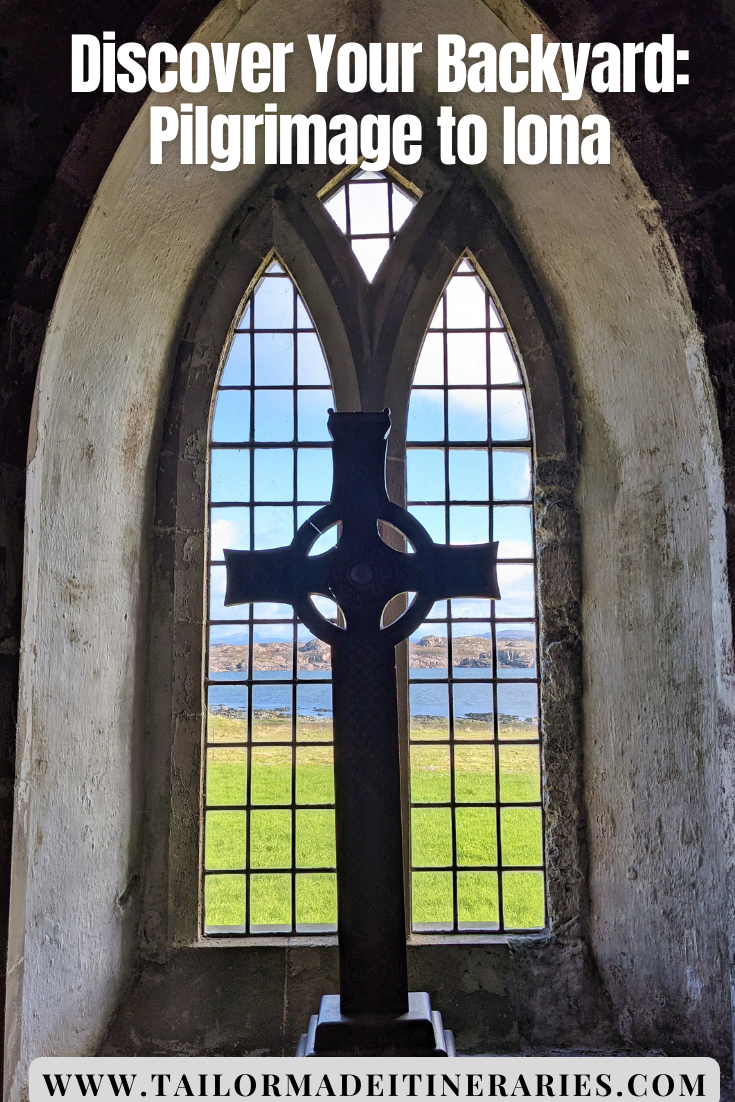
Disclosure: This post contains affiliate links. Regardless of this, please be advised that all opinions expressed in this blog post are genuine and authentically my own.
Author: Barry Pickard
Iona is only a small island, less than 4 square miles in area, and has a tiny population of just over a hundred. Yet this island has dramatically shaped Scottish history, being the cradle of Christianity in Scotland.
It was on Iona that St. Columba and his twelve associates landed after sailing from Ireland, establishing the abbey which the island was to become famous for in 563 AD. As this monastery developed and became a seat of learning, the island became a launch pad for missionaries, spreading the Celtic form of Christianity throughout the lands of the Picts and Gaels, and even as far south as the Anglo-Saxon kingdom of Northumberland.

Over the centuries, the island was the spiritual centre of Scotland, but this was to change during the Reformation in 1560, when much of the abbey, nunnery and impressive stone crosses, were dismantled and destroyed. Today, the 13th century abbey has been rebuilt, and the ruins of the nunnery are the most intact in Britain, but there is little evidence of the original monastery built by St. Columba. This has not stopped Iona, however, becoming a major centre of pilgrimage, with around 130,000 people visiting the island every year.

Join us in this travel post as we discover this fascinating island, giving tips along the way on how you too can visit Iona.
Don’t forget that Tailor-Made Itineraries delights in creating bespoke self-guided tours. So, if visiting Scotland’s islands appeals to you, reach out to me by email. I would be more than happy to design a self-guided tour around your requirements incorporating Iona, or indeed, a general tour of Scotland.
The Planning Stage
The first decision we needed to make was how to access the island. There are a handful of tour companies, operating out of Oban and the island of Mull, that run trips to Iona, sometimes combined with sailings to the likes of Staffa or even sea safaris.
Tailor-Made Top Tip: We have taken a Staffa Tours cruise to the Isle of Staffa (see our previous blog post), and this cruise also docks at Iona allowing you to explore the island for a couple of hours (although on that trip, we chose not to disembark).
However, we didn’t want to be restricted to a set time on Iona, so we decided to take our car, going on the CalMac ferry from Oban to Craignure on Mull, then drove across the island to the small port of Fionnphort. From there, a small ferry sails back and forth the short distance between Iona and Fionnphort (note, the ferry is pedestrian only, unless you live on Iona and own a car).
Tailor-Made Top Tip: If you wish to take your car on the CalMac ferry from Oban to Mull, book well in advance. There are only limited spaces, and these sell out quickly during high season.

Oban to Mull
Our trip started at Oban’s ferry port, which is a modern facility, with an indoor terminal, and only a five-minute walk from the centre of town. The ferry itself was also modern, comfortable, and well-appointed. The sailing to Mull only took around 45-minutes, and we enjoyed bright sunshine for the full journey. The blue skies allowed us a lovely view of the Oban waterfront, and we sailed close to the scenic Lismore Lighthouse, then the imposing Duart Castle as we pulled into Craignure harbour.
Tailor-Made Top Tip: Return tickets on the ferry between Oban and Craignure cost £7.60 per person and £28.50 for the car, with under 5s going free. If you don’t take your car, you can take the coach between Craignure and Fionnphort, but this costs £17 per person, so it is cheaper to take your own car if there are two or more of you.
Magnificent Mull
Having the car, gave us the opportunity to stop at the roadside and admire the stunning hills and mountains of Mull. There wasn’t much in the way of facilities or attractions to stop at during the hour-long drive, but the scenery more than makes up for this.
If you are enjoying this post, remember and subscribe to my mailing list to receive my latest blog posts.
On arriving at Fionnphort, we found this little settlement had all the necessary facilities, with a small ferry terminal building, plenty of parking and a couple of hot food options. We left the car in the ample parking that leads down to the harbour area and joined the CalMac ferry, paying as we boarded.
Tailor-Made Top Tip: Currently, tickets can’t be prebooked for the ferry between Fionnphort and Iona. An adult return ticket costs £3.70 and children over five are £1.90.
Iona Abbey
The ferry journey only takes around ten minutes and brings you into Iona’s quaint little village, located at St. Ronan’s Bay. We walked up through the tiny settlement towards Iona Abbey. The building is in the care of Historic Scotland and currently you need to book a timed ticket to get entry.


Tailor-Made Top Tip: Adult tickets for the abbey cost £9, however, you should consider buying an annual membership (£52.20) or a one-year membership (£58). If you are spending several days exploring Scotland, you will probably recoup your membership fee.
There are a number of buildings to explore at the abbey and you should set aside at least an hour to explore the buildings. The Abbey Church, built in the 1200s when the Benedictines arrived on Iona, is an oasis of calm and very simple in design.
The abbey cloisters are quite a delight and beautiful to walk around, with a peaceful garden in the centre, ideal for quiet contemplation.
Michael Chapel is quite tiny and was also built in the 1200s.
The Abbey Museum, housed in the former infirmary, sets out perfectly the remains of tall stone crosses and intricate tomb stones.
If you are enjoying this post, remember and subscribe to my mailing list to receive my latest blog posts.
Just outside of the abbey is St Oran’s Chapel. Built in the 1100s, it was the burial chapel of the MacDonald Lords of the Isles. The graveyard, as well as hosting these clan chiefs, also boasts the graves of a number of early Scottish kings, as well as royalty from Ireland and Norway. It is also the last resting place of the influential Labour politician, John Smith.
Exploring Iona
Iona Abbey is certainly the main attraction when visiting the island, but take time to visit the Iona Heritage Centre, which has some interesting displays about life on the island over the years. There are also a number of quaint little shops, some breath-taking coastal views, MacLean’s Cross and the ruins of the Nunnery.
Tailor-Made Top Tip: We had lunch at the St Columba Hotel and can highly recommend their meals. The hotel also has a lovely outdoor area where you can enjoy food and drinks.
If you are enjoying this post, remember and subscribe to my mailing list to receive my latest blog posts.
Where to Stay When Visiting Iona
There are very limited options for staying on the island itself and they are often booked up to a year in advance. Still, it is worth checking to see if you can stay at Machair House or the Iona Pods.
There are options on the Isle of Mull, such as the Inn at Port nan Gael, which is on the approach road to Iona, and there are a handful of places in Tobermory that you could stay, such as The Tobermory Hotel.
However, we opted to stay at the Clan Cottages, in the idyllic Kilmore, just south of Oban. There is a selection of well-appointed self-catering cottages on the shores of Loch Nell and they are an ideal base from which to explore Oban and the surrounding countryside.

Alternatively, there are a number of options in Oban itself, such as the Dungallan Country House Bed & Breakfast, the Muthu Alexandra Hotel, and No17 The Promenade.
Conclusion
Iona has a great deal to offer the visitor, whether you are looking for quiet meditation, history or captivating scenery. In total, we spent over four hours on the island, which was enough to see Iona Abbey and the main sites around the village. But to fully explore the island out with the village, especially its stunning bays and beaches, you should plan to spend at least a full day on the island. Accommodation is limited, although there are options in and around Fionnphort that would give easy access to the island.
Related Blog Posts
If you are interested in finding out more about the Argyll and Bute region of Scotland, please view the Tailor-Made Itineraries posts below:
Comment below and tell us about your trip to Iona.
Don’t forget that Tailor-Made Itineraries delights in creating bespoke self-guided tours. So, if visiting Scotland’s islands appeals to you, reach out to me by email. I would be more than happy to design a self-guided tour around your requirements incorporating Iona, or indeed, a general tour of Scotland.
Tailor-Made Itineraries posts every two weeks, and you can subscribe to the latest blog and newsletter here. Until then, happy reading and safe travels.
Barry
Contact Me: tailoritineraries@gmail.com
Tailor-Made Itineraries creates one-of-a-kind bespoke self-guided travel itineraries for adventurous and curious travellers.
These self-guided tours deliver a personalised and exciting holiday experience that takes the effort out of trip planning.





























































































Comentarios